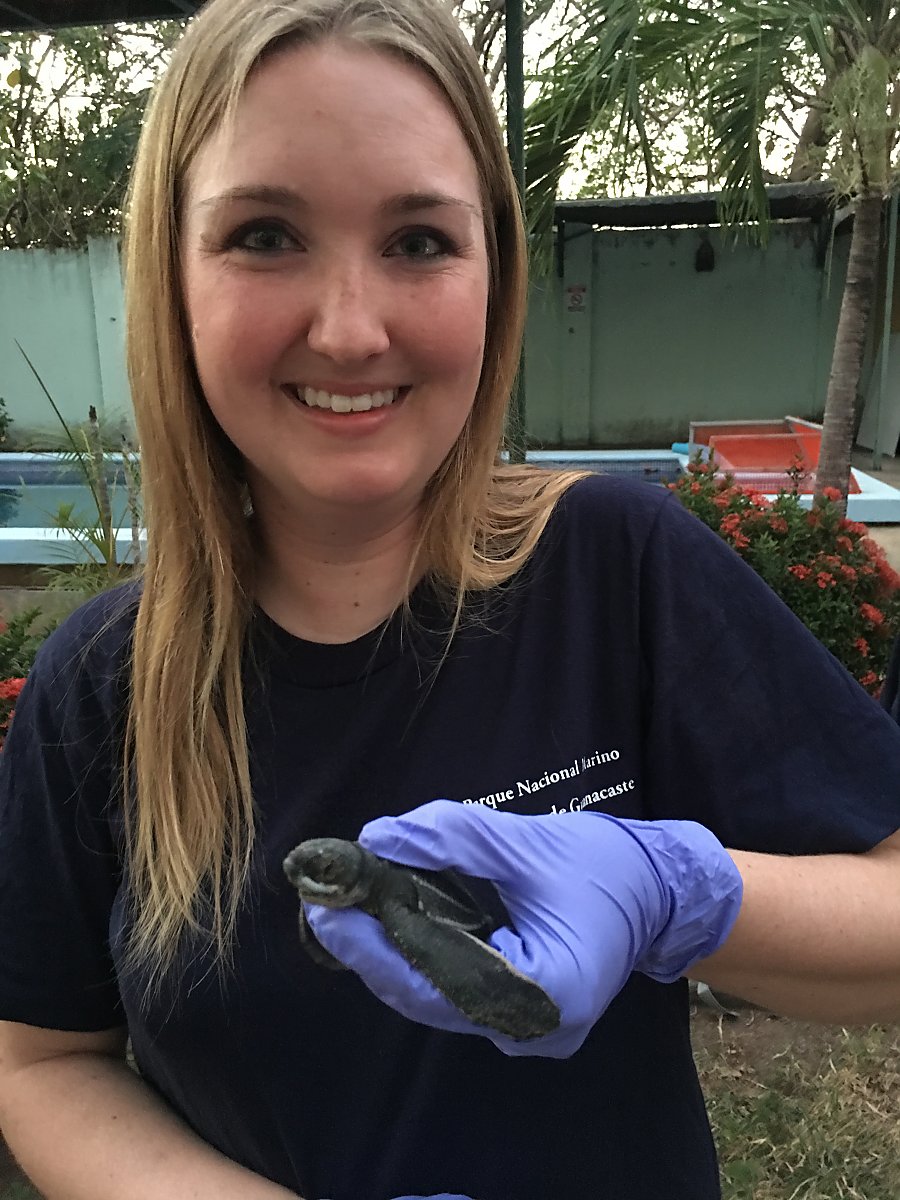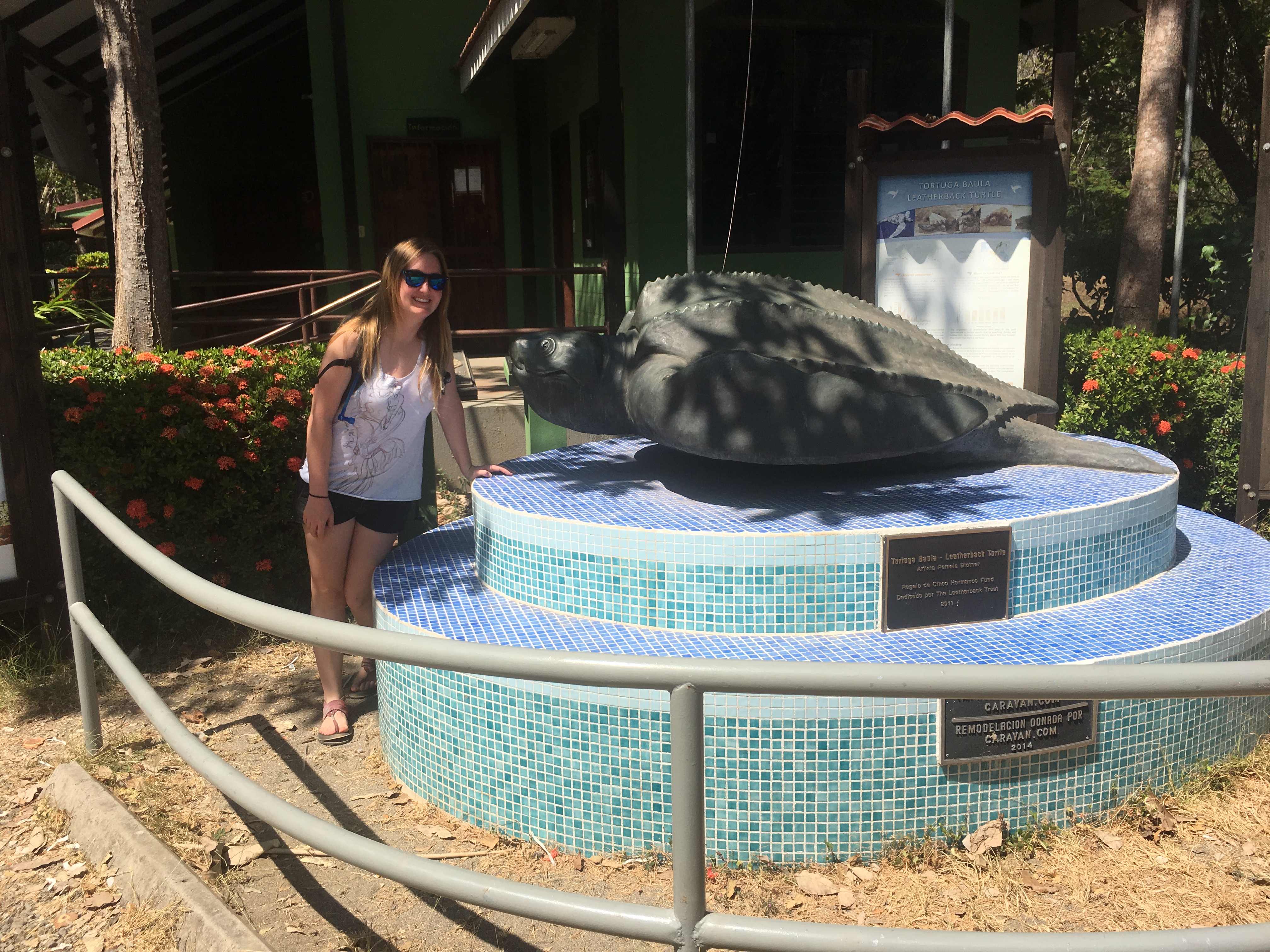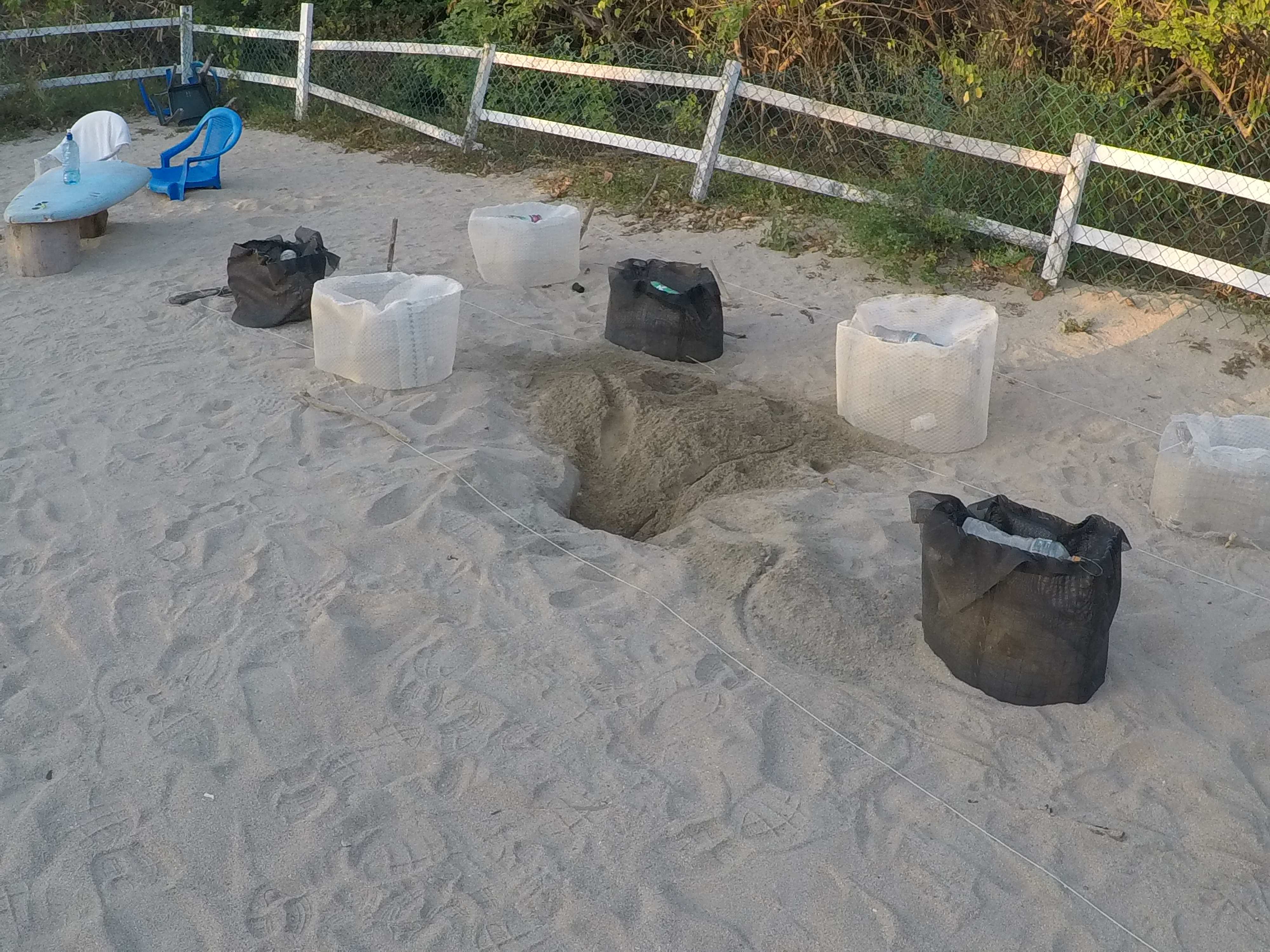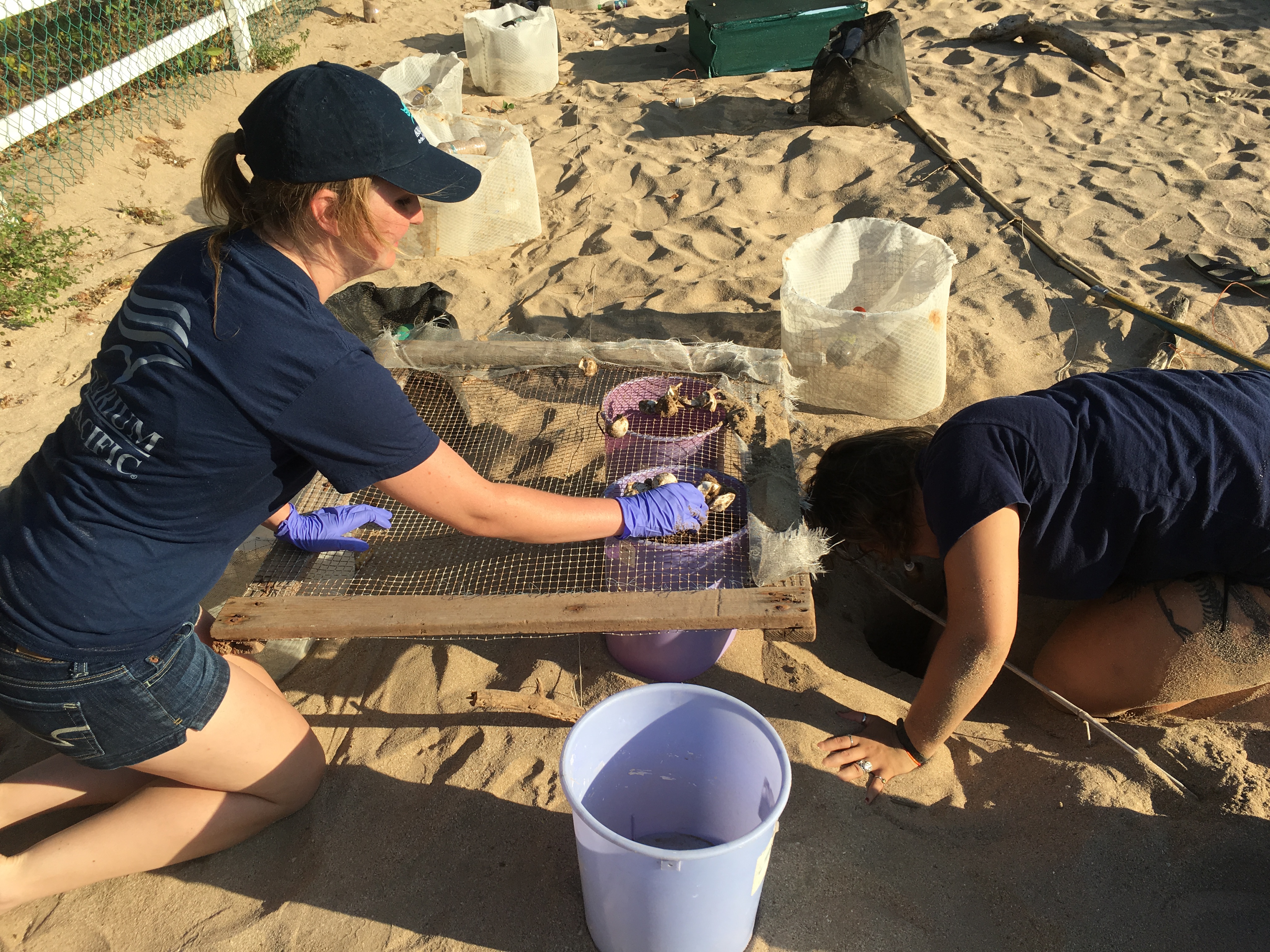Saving Leatherback Sea Turtles (Part 1)

In Focus
Tuesday, March 21, 2017
Earlier this year Senior Aquarist Lauren Harper went on an Earthwatch Expedition to Costa Rica. Every winter leatherback sea turtles migrate to the Playa Grande beach on the Pacific coast of this country to lay eggs.
Nathan Robinson and a team of scientists are conserving this critically endangered species through research, education, and advocacy. Lauren spent nine days working with leatherback and olive Ridley sea turtles. Today she will share her experience in the hatchery where she got to meet some baby sea turtles.
It’s not every day that you get to travel for work, let alone make a trip all the way to Costa Rica! That’s why I was ecstatic when I learned that I would be working with leatherback sea turtles in Central America.
Here at the Aquarium, I work in the Tropical Pacific Gallery. This is the home to Theo and Lou, our two olive Ridley sea turtles. I’ve also played a part in rehabilitating rescued green sea turtles at the Aquarium and releasing them back into the ocean.
As you can see, sea turtles already had a special place in my heart, so this was the opportunity of a lifetime for me.
Leatherback sea turtles have a flexible shell that feels like leather, which is how they got their name. They are the largest-known turtle on Earth and can grow up to seven feet long. The largest leatherback ever recorded weighed in at about 2,000 pounds. As someone who was lucky enough to see four in person, I can tell you that they are massive.
One reason I find this species so interesting is that they have been around for a 100 million years. That’s when dinosaurs still walked the earth!
Unfortunately, their population has experienced a massive decline since the late 1980s. Egg poaching, plastic pollution, climate change, and fishing practices such as trawling have played a major part in this decline.
Scientists with The Leatherback Trust have been studying the animal’s behavior, physiology, genetics, population biology, and migration patterns since 1993. This vital information has given us a better understanding of how to conserve this important species. To continue gathering information, they work with volunteers, like me, to monitor the sea turtles while they nest and lay eggs.
Some nights they assigned me to hatchery watch. During this shift, we sat in the hatchery at the marine biology station and guarded nests from predators for five to six hours. We also checked nests every 30 minutes to see if any had begun to hatch.
Nests were relocated from the beach to the hatchery for various reasons. For instance, the mother may have laid eggs too close to the water where the tide would drown them. Other nests were in laid in front of a hotel where there was heavy foot traffic or far away from the water where the dry sand is deep and too warm.
Sand temperature is important because a sea turtle’s sex is determined by the temperature of the nest. Nests at higher temperatures result in more female sea turtles, while a lower temperature produces more males. We remembered this by thinking of the funny phrase, “Hot Chicks, Cool Dudes.”
In order for the population to recuperate, we need a balance of male and female hatchlings. Unfortunately, it will be increasingly difficult to attain ideal nest temperatures as scientists have recorded rising beach temperatures due to climate change.
During one watch, we discovered a nest of sea turtles was hatching. It was so exciting! First, we saw their tiny heads pop up out of the sand. Then, they rested for a moment before fully emerging. Once they were out of the nest, we worked with the biologists to weigh and measure a few of the hatchings for research purposes. Finally, we released them onto the beach and watched them scuttle into the water.
It was pretty magical to watch these tiny sea turtles come into the world. It was a reminder of the importance of dedicating ourselves to the protection and conservation of this magnificent species, especially if we want to see a rise in their population.




